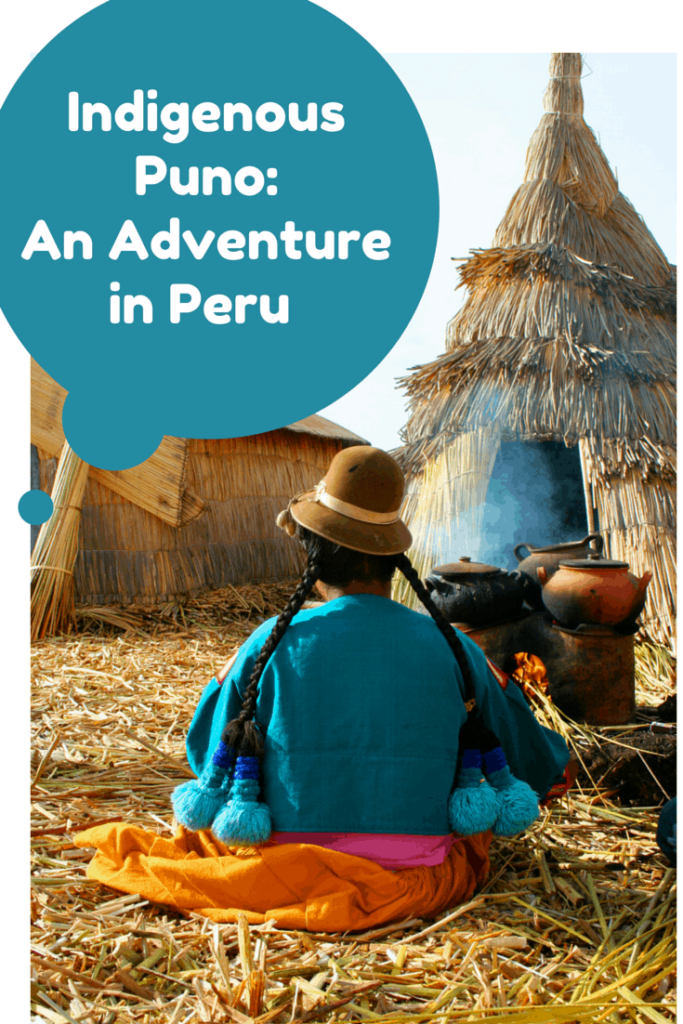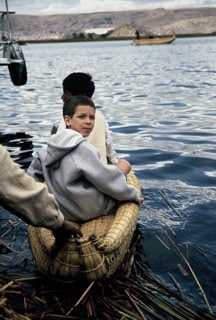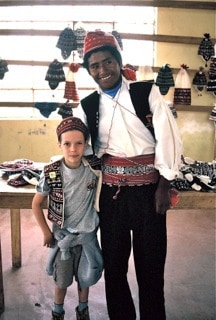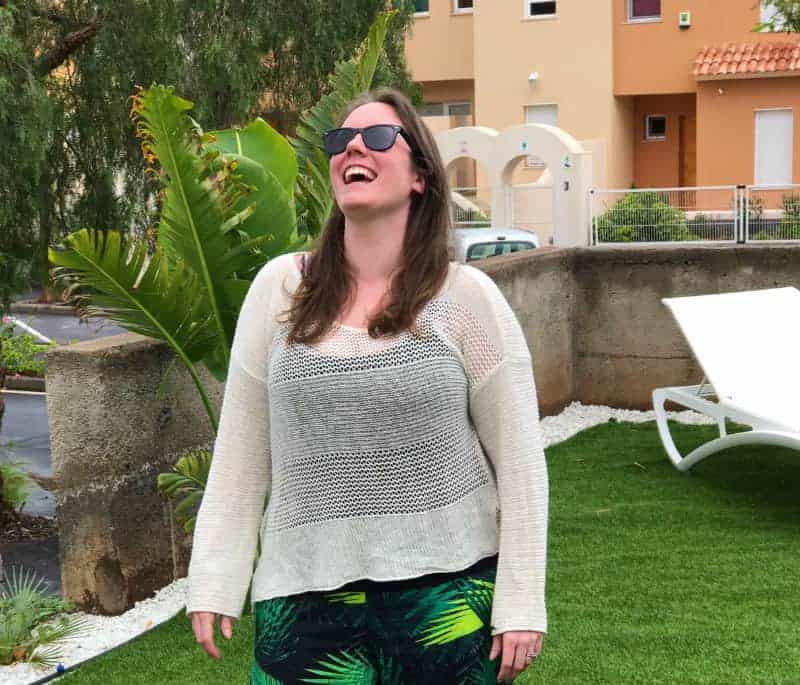 Step inside Indiana Jones territory with an adventure in Peru. Traveling with kids in tow makes the experience even more memorable, but it’s certainly not for the faint of heart. Things like truly unique food, rugged landscapes and transportation difficulties can be incredibly challenging. But boy, it’s worth it.
Step inside Indiana Jones territory with an adventure in Peru. Traveling with kids in tow makes the experience even more memorable, but it’s certainly not for the faint of heart. Things like truly unique food, rugged landscapes and transportation difficulties can be incredibly challenging. But boy, it’s worth it.
Puno’s pretty passion
My son George and I landed in southeastern Peru on a trekking tour a few years ago. Our most memorable stop, Puno, is the capital of Peru’s altiplano—this harsh highland region is probably better suited to roaming vicuñas and alpacas than to people. But it is also Peru’s folklore center with holidays, legends and more than 300 different ethnic dances. In February, Puno hosts the Feast of the Virgin de la Candelaria, and the town is filled with processions . Our favorite spot became the market down by the train tracks. The vibrant colors here, the sounds and smells, are uniquely South American. Local ladies wearing traditional ‘polleras’ and ‘monteras’ sell seemingly every variety of potato (potatoes originate in the Andes), fresh flowers, as well as handicrafts and beautifully crafted musical instruments.
The floating islands of Titicaca
Our biggest venture was Lake Titicaca. The world’s highest navigable lake is deep-blue and sits in a cup of mountain peaks. According to legend, the first Inca, Manco Capac, emerged from Lake Titicaca and founded the Inca Empire. They say that the shape of Lake Titicaca is a giant puma, opening his mouth to eat a rabbit (the rabbit being Puno Bay).
Since pre-Inca days, the local Uros Indians have lived on tiny floating islands built on soft patches of totora reeds here in the middle of Lake Titicaca. It’s an extraordinary sight. They mostly subsist off the reeds and fish, and the money they earn comes from tourists and mainlanders who buy their fish and handicrafts. Lake Titicaca has a number of these reed islands and they all depend on each other for survival. But the Uros don’t reject modern technology: some boats have motors, some houses even have solar panels to run televisions. They have a radio station, schools, a clinic and even a church.
Uros start the islands with a dense, natural growth of reeds, then pile bundled reeds on top of each other to form a circle, which they replenish repeatedly every fortnight. We stepped tentatively onto one island, only to find it soft, springy and—thankfully—very supportive underfoot. I lost sight of George for a few minutes and finally spotted him high in a watchtower engulfed by a huge, yawning reed monster. Impressive workmanship.
George ping-ponged his way around the floating island, chewing on iodine rich reed roots. He made fast friends with a local kid who invited him out on a boat ride. I held my breath as they floated out on crystal waters bobbing and swaying on what seemed like little more than a flimsy reed raft. Of course he lived to tell the story… again and again and again. George proudly invested in a miniature reed boat (replica of the real thing) to prove his point as well as some pan-pipes and an exquisite ‘charango’ guitar (I’m told) made from armadillo shells.
Indigenous tradition up close
 A four hour boat ride ferried us onwards to the island of Taquile. This traditional island is a Quechua speaking community where villagers still live off ancient agricultural terraces and the skill of Taquileños weavers who have maintained a tradition dating back centuries. There are no cars and no bicycles on the island; transport is by foot or by beast. And while we spotted the odd sheep, cow and chicken, it turned out Taquile has the curious distinction of being dog-free because the natives consider dogs (as well as cats) a delicacy.
A four hour boat ride ferried us onwards to the island of Taquile. This traditional island is a Quechua speaking community where villagers still live off ancient agricultural terraces and the skill of Taquileños weavers who have maintained a tradition dating back centuries. There are no cars and no bicycles on the island; transport is by foot or by beast. And while we spotted the odd sheep, cow and chicken, it turned out Taquile has the curious distinction of being dog-free because the natives consider dogs (as well as cats) a delicacy.
This sense of freedom from modern paraphanalia made for glorious trekking. From the boat landing, we hiked up countless, hand-hewn stone steps to the village (Be warned, it’s quite a schlepp to the main plaza) Along the way we encountered unfazed sheep and cows on the path, vibrantly dressed men and women drop-spinning as they strolled by, and toddlers running out to greet us with herbs and flowers.
We got a crash course in botany as we climbed. Unusual flowers and trees on the Island include the Kolle (used as timber for roofing and for firewood), the Cantuta flower (national flower of Peru), the Chukjo (used as detergent) and the medicinal plant Muña (for stomach disease) It seemed as though nothing went to waste here and everything had a use.
Our journey around Lake Titicaca typified our Peruvian experience. It is a country where practices run deep—5000 years, to be exact. Yet it is a place continuously energized by fresh influences and welcoming to visitors. If you come prepared for a little less, I guarantee you’ll leave Peru with a whole lot more.
Helen Truszkowski has been a travel writer, author and photographer for over 20 years. Her work has appeared in major publications worldwide; she has appeared on BBC News 24 and BBC radio as a consultant travel expert. Her photography has appeared on movie, commercial and TV sets and can be seen on permanent exhibition in Los Angeles California. Follow her adventures @haltrusz and at www.go-get-lost.com




I love this! Especially the boat ride, I would love to be on one of those.
I haven’t been to Peru yet, but Lake Titicaca is more of a draw for me than Machu Picchu. I can’t wait to experience the lake and interact with the indigenous peoples living there someday. Great post!
Thanks so much! Seems like an incredible way to connect with other cultures.